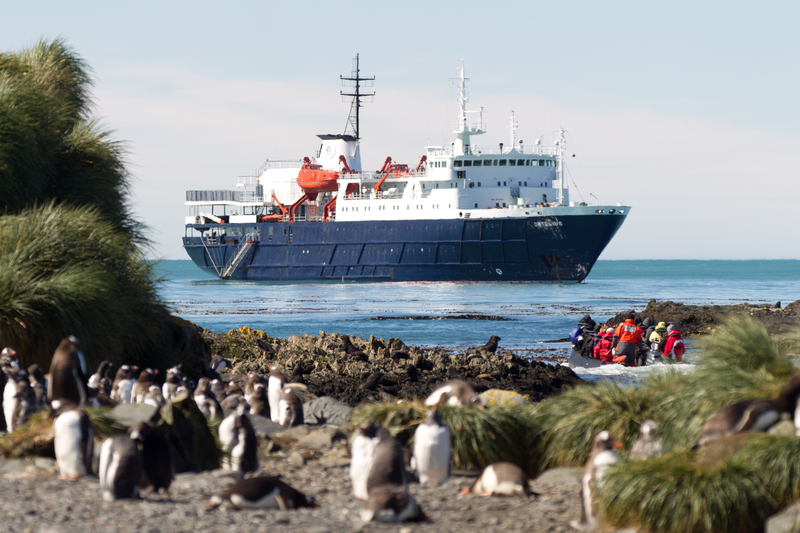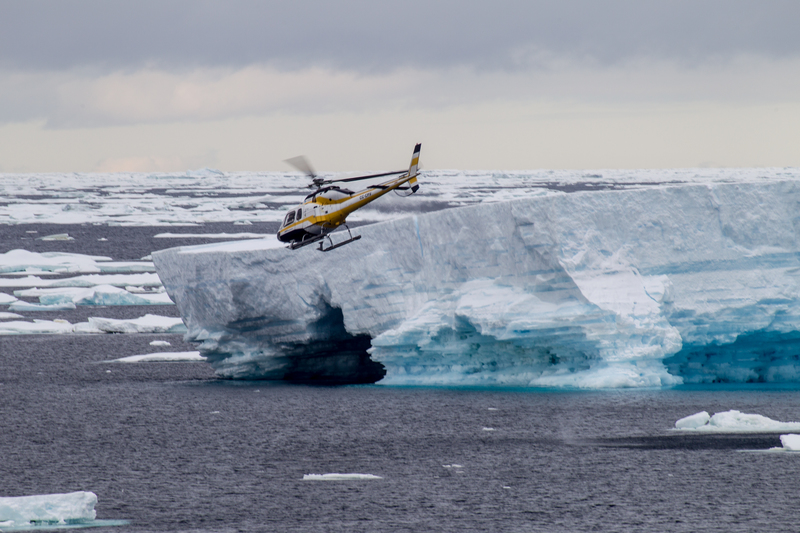Your voyage begins where the world drops off. Ushuaia, Argentina, reputed to be the southernmost city on the planet, is located on the far southern tip of South America. Starting in the afternoon, you embark from this small resort town on Tierra del Fuego, nicknamed “The End of the World,” and sail the mountain-fringed Beagle Channel for the remainder of the evening.
PLEASE NOTE: All itineraries are for guidance only. Programs may vary depending on the local ice, weather, and wildlife conditions. The on-board expedition leader will determine the final itinerary. Flexibility is paramount for expedition cruises. The average cruising speed of m/v Ortelius is 10.5 knots. During these voyages, we transfer our passengers to shore using Zodiacs. We also operate our two helicopters at sites where Zodiacs cannot be used. Potential areas for helicopter transfer are Cape Evans (the location of Scott’s hut), Cape Royds (the location of Shackleton’s hut), the Ross Ice Shelf, Peter I Island, and the Dry Valleys. Our plan is to make five helicopter-based landings, though a specific amount of helicopter time cannot be guaranteed in advance. Helicopters provide us with a great advantage in reaching certain landing sites that are otherwise almost inaccessible, but this is a true expedition in the world’s most remote area: weather, ice, and other forces of nature dictate the final itinerary. Conditions may change rapidly, impacting helicopter operations. Please understand and accept this. Safety is our greatest concern, and no compromises can be made. The vessel is equipped with two helicopters. If one helicopter is unable to fly for whatever reason, helicopter operations will cease or be cancelled. One helicopter always needs to be supported by a second functioning helicopter. No guarantees can be given, and in no event will claims be accepted. Special note: Crossing the International Date Line Depending on which direction one travels across the International Date Line, a day is either lost or gained. (Crossing westward, a day is gained; crossing eastward, a day is lost.) Please take note of this when calculating your actual time travelled. The days listed in the itinerary duration reflect the actual time travelled.




























